Redlands Konica Minolta Art Prize image gallery
Five artist pairings from 2018's exhibition, "Extreme Prejudice"
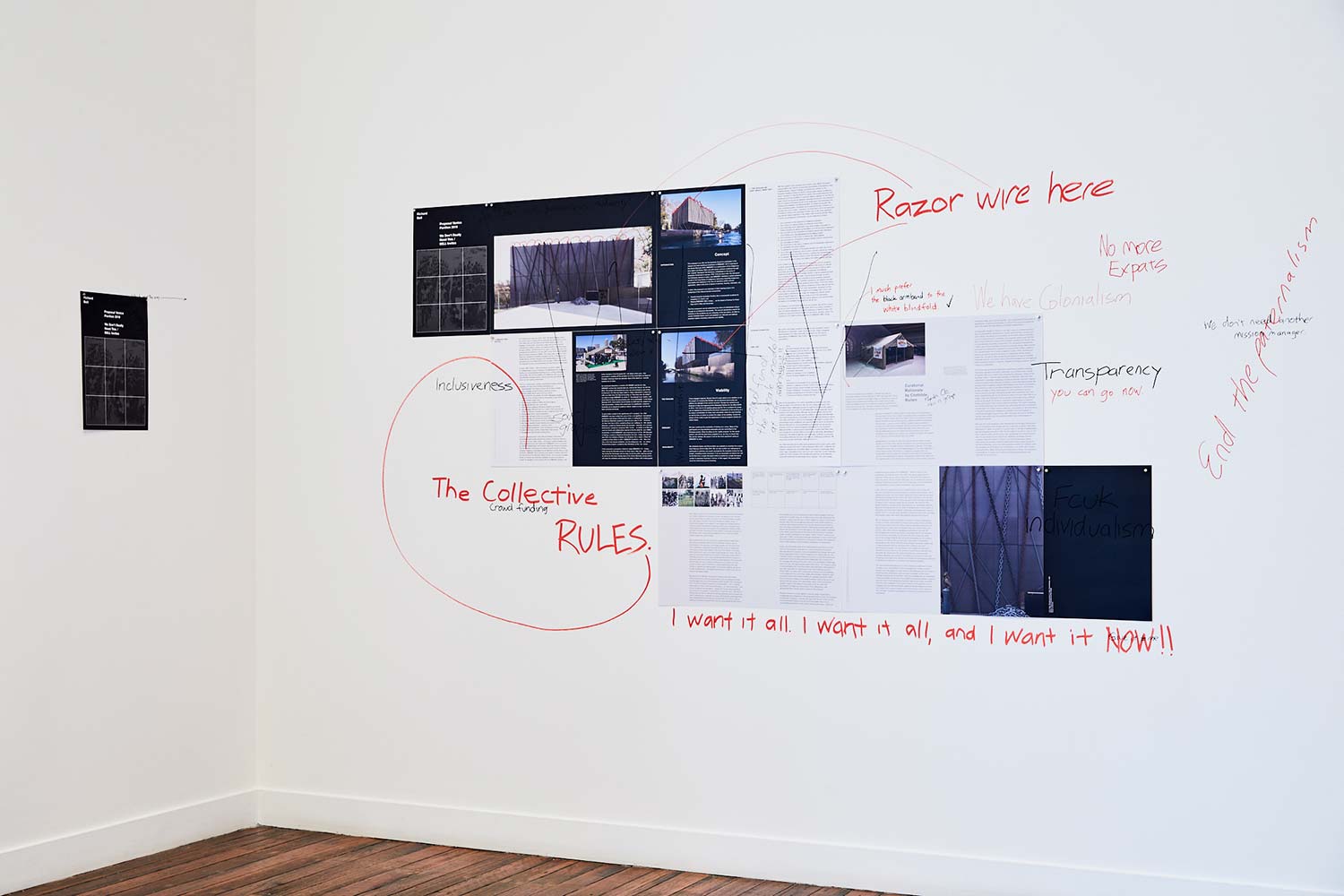
Established artist: Richard Bell Pericolo! Artisti al lavoro (paired with Megan Cope)
Political activist and artist Richard Bell was born in in 1953 in Charleville, Queensland, and is a member of the Kamilaroi, Kooma, Jiman and Gurang Gurang communities. Collected by the likes of the National Gallery of Australia and National Gallery of Canada, his artwork often deals with Aboriginal emancipation and determination. In this installation Bell uses a mixture of digital prints and felt-tipped pen scrawled on the wall to make a form of artistic protest.
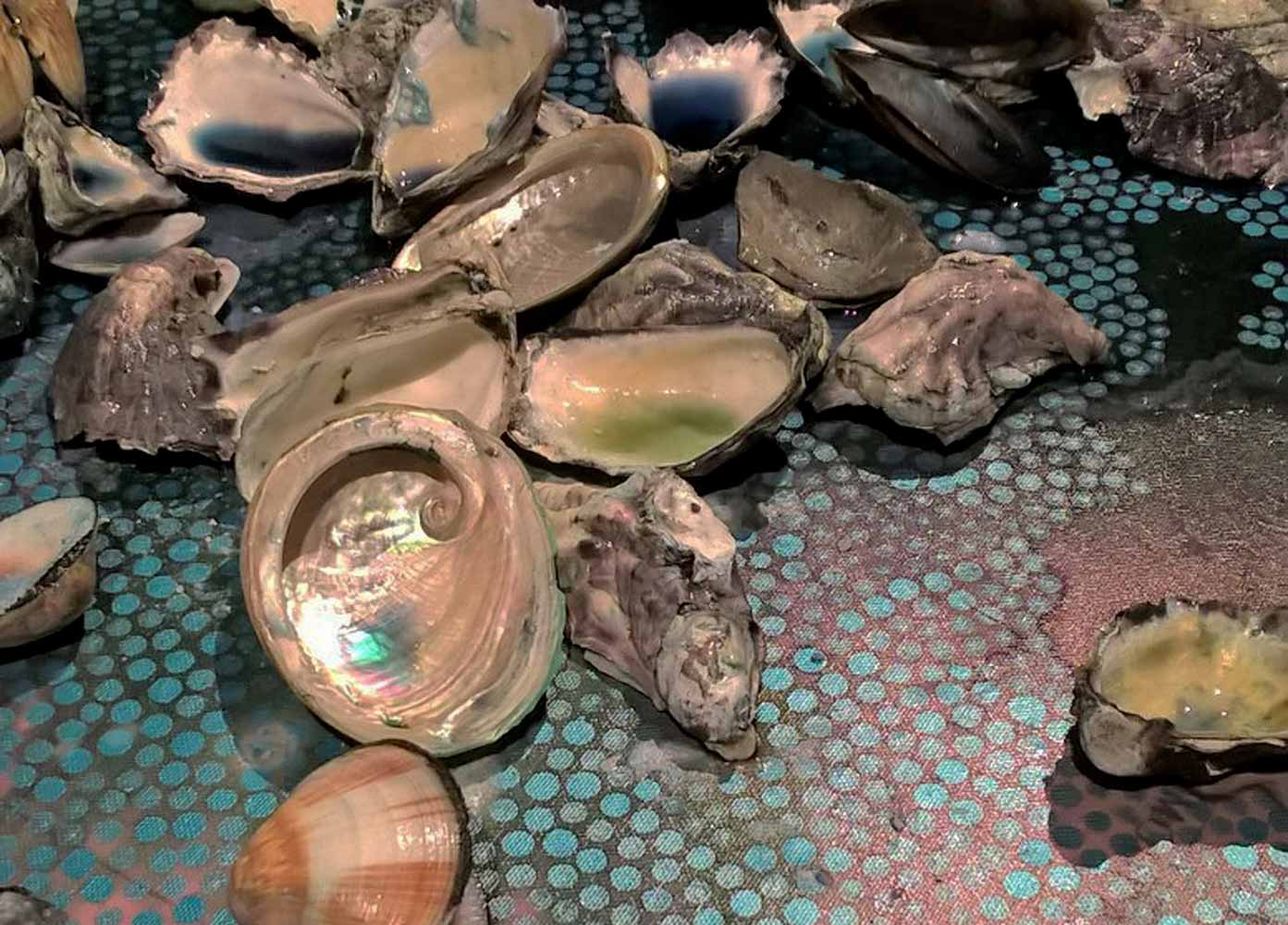
Emerging artist: Megan Cope Currents II (paired with Richard Bell)
Richard Bell has selected another Queensland artist for the Redlands Konica Minolta Art Prize: Quandamooka woman Megan Cope, who hails from North Stradbroke Island. In Currents II Cope focuses on a crisis facing many indigenous peoples across the world: rising sea levels and ocean acidification. A collaboration between the artist and University of Sydney marine biologist Roberta Johnson, Currents II combines scientific enquiry with archival mapping of Gadigal Country. Aboriginal middens, areas where shells and other food debris have accumulated over centuries, are also referenced in an installation which, like the middens, will change over time.
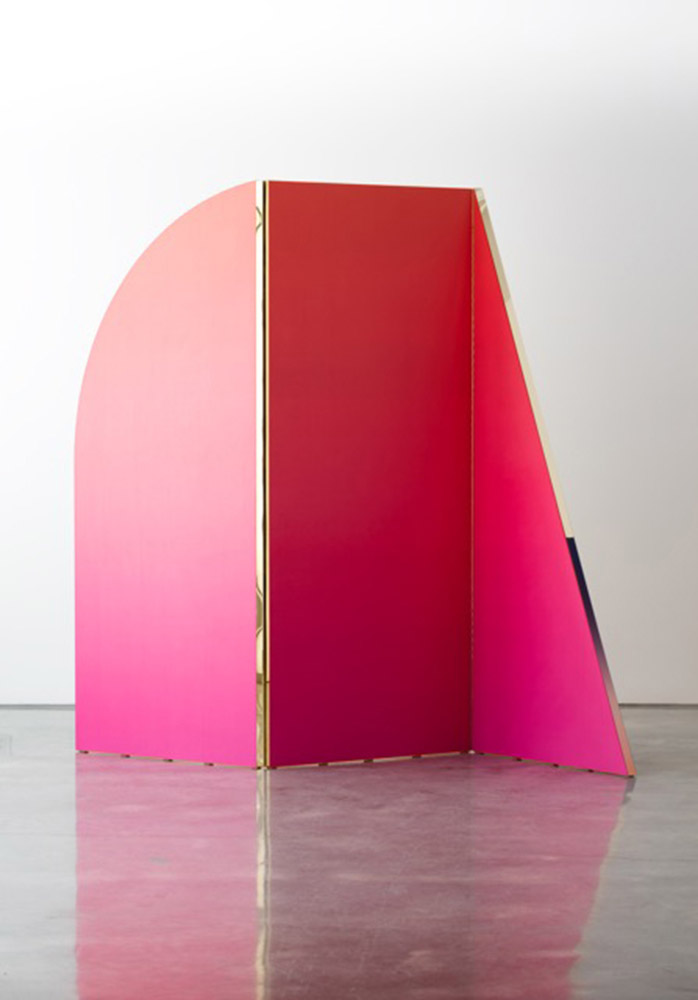
Established artist: Jonny Niesche En dehors (scarlet to choral) (paired with Mason Kimber)
Architectural shapes – combined with an examination of surface skins – are mixed with vibrant pops of psychedelic colours in Jonny Niesche’s works. As his Vienna-based gallery Zeller Van Almsick puts it, Niesche creates pieces that are “materially fetishistic”, whilst simultaneously changing our conceptions of what defines a painting. In En dehors (scarlet to choral), the Sydney-based artist pays tribute to the garish, glossy, and ultimately gorgeous posturing of David Bowie in his 1972-3 Ziggy Stardust tour. Created from a three-part screen, with brass piano hinges, the structure has myriad possible arrangements – much like classical ballet, from which the phrase “en dehors” is borrowed.
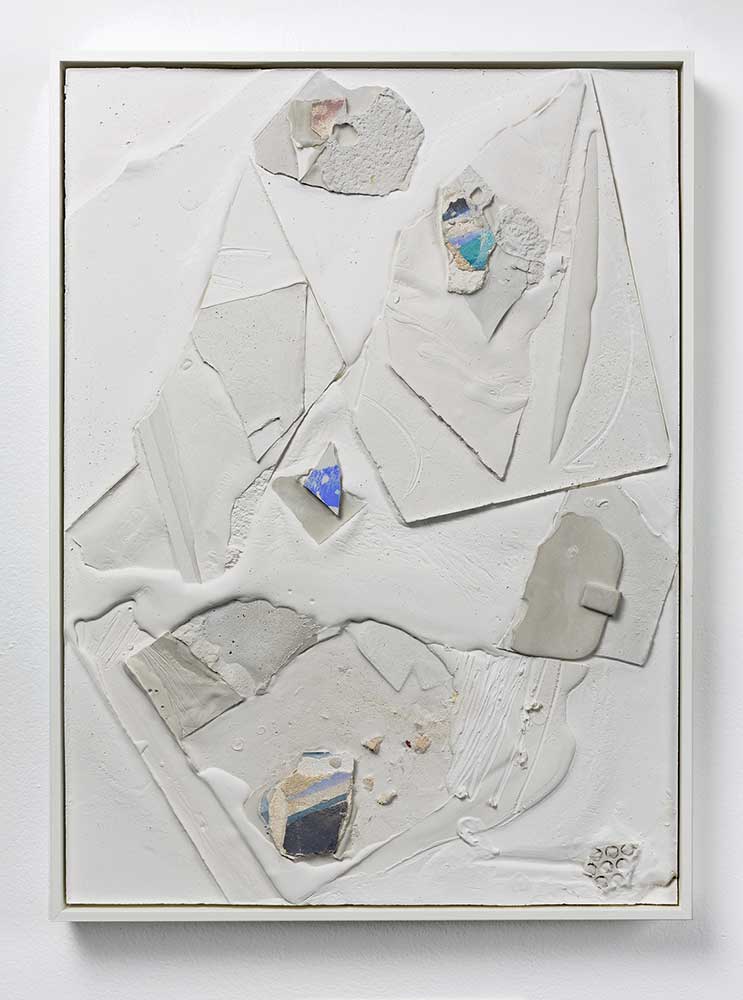
Emerging artist: Mason Kimber Island/Relay (paired with Jonny Niesche)
Jonny Niesche has chosen an emerging artist who also tackles space and, in this case, architectural memory. Raised in Perth, and educated at the National Art School in Sydney, Mason Kimber learned the craft of painting frescoes at a residency in Rome. Today Kimber combines fresco and wall-based installations with collages, sculpture and painting. In Island/Relay, created from a combination of sand, lime plaster and acrylic, Kimber digs deep into his past – adding, and rearranging, remnants of old artworks and forgotten materials into wet cement. As Kimber told The Sydney Morning Herald in 2017, “I’m interested in architecture and different shapes, and the way different surfaces and textures can make you feel.”
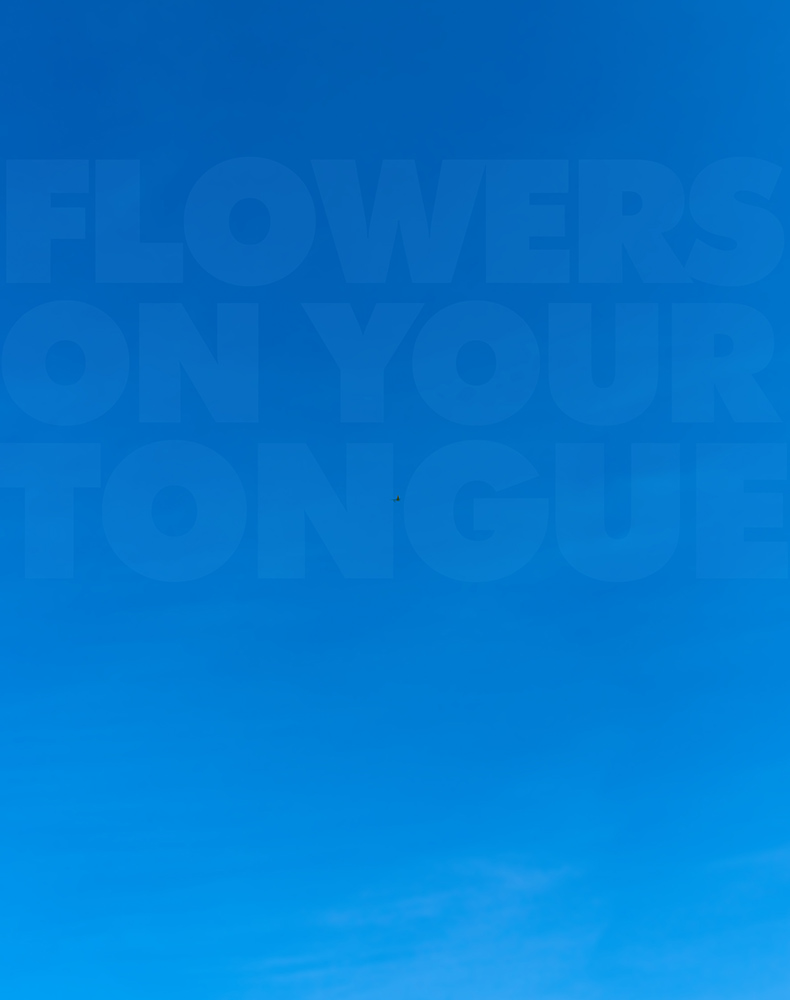
Established artist: Vicente Butron Limited Action (paired with Gemma Avery)
“I now see many artists seeking alternative approaches for the production and presentation of art,” Redlands Konica Minolta Art Prize guest curator Nike Savvas says. Vicente Butron is one of those artists who seeks not only different forms of presentation, but who wants to challenge the conventional norms around the role and identity of the artist himself. Born in Manila in 1959, Butron, who migrated to Australia in 1973, first conceived of artwork The Limited Actions in the 1990s. Back then, the work was made up of performative paintings with audience members playing a central part; today the concept has been expanded, in this case with aphorisms added to monochrome paintings.
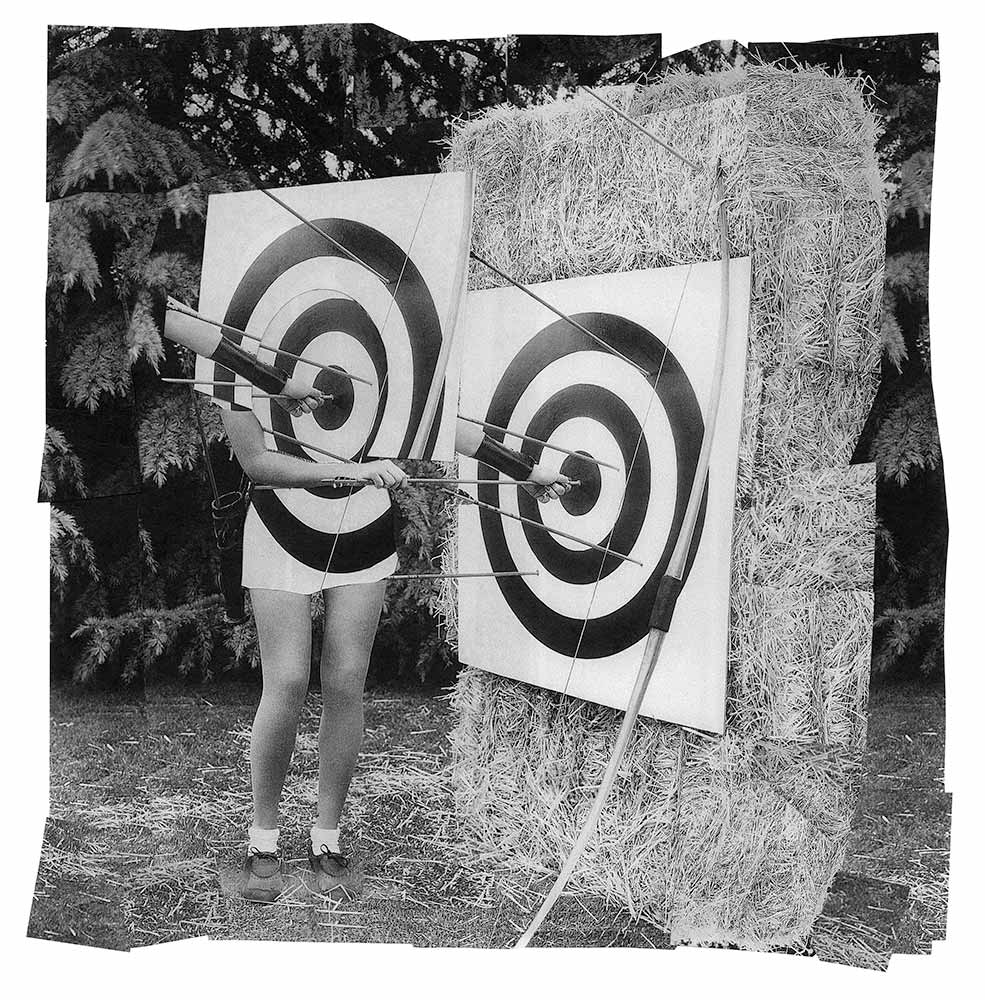
Emerging artist: Gemma Avery Target Practise (paired with Vicente Butron)
In Target Practise Gemma Avery, selected by Vicente Butron, has used a vintage eight by ten inch photograph of a female archer, creating an artwork that merges the familiar with something off-kilter and amiss. Butron’s work questions the role of the artist: Avery, by highlighting archery, also plays with ideas of what art is. She has, she says, chosen a sport “rich in metaphor: both for the subjective nature of art, and how I often feel navigating my own practise – tiny degrees of adjustment can be the difference between hitting or missing the mark.”
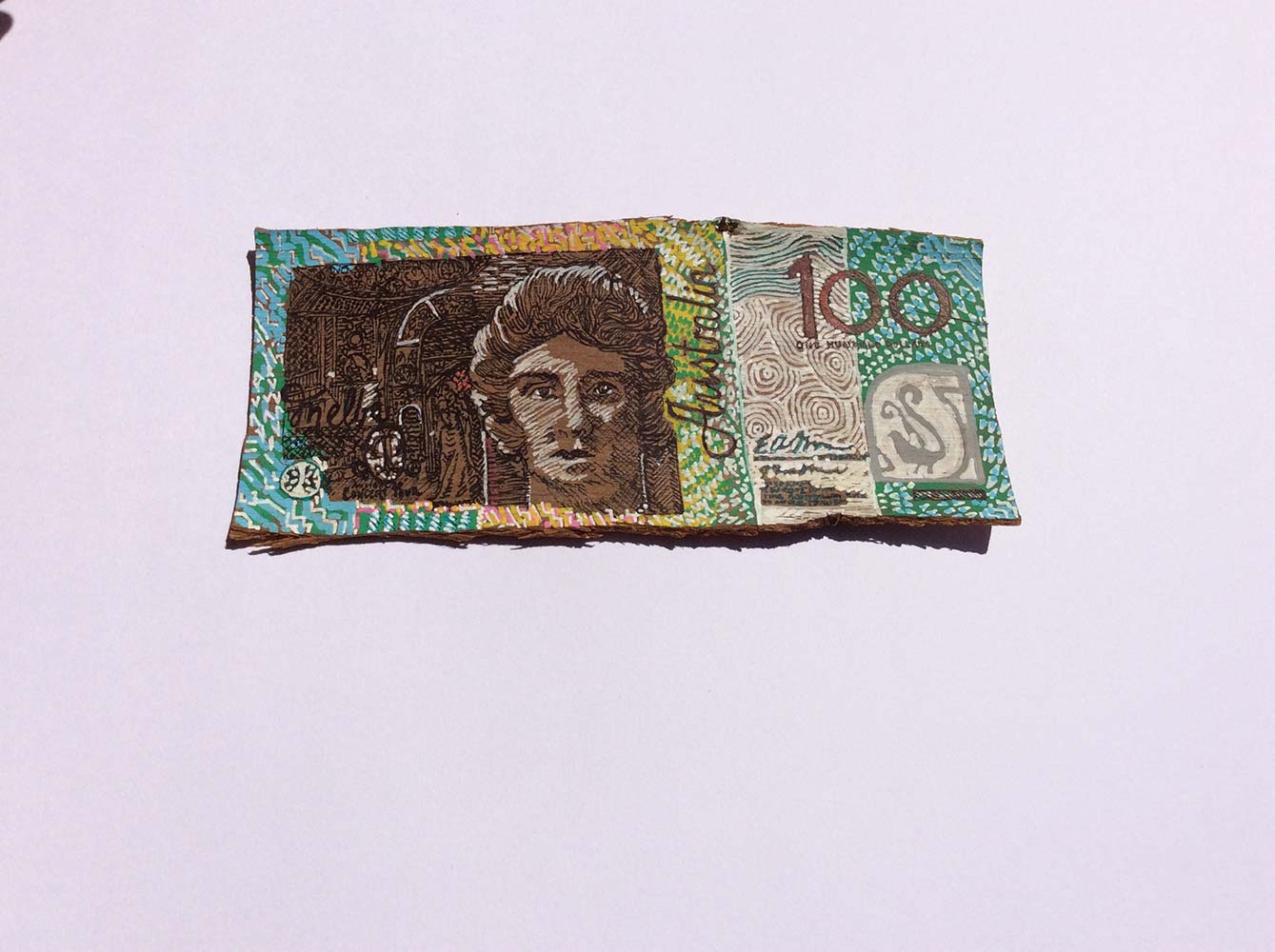
Established artist: Sarah Goffman Bark Painting (paired with Connie Anthes)
“She walks the streets in search of garbage.” So began a 2017 profile on Sarah Goffman in The Saturday Paper, which added: “She sees beauty where most don’t.” A self-proclaimed “forensic garbologist” and “trash convertor”, Goffman takes a long hard look at our junk, waste, dross and detritus, turning it from the discarded to the valuable, whilst commenting on the West’s wasteful consumerist society. In Bark Painting, Goffman paints Australian bank notes onto bark, referencing both Aboriginal bark painting techniques and the unauthorised use of Arnhem Land designs – in particular the work of the late David Malangi Daymirringu, whose work was appropriated in 1966 for the one dollar note.
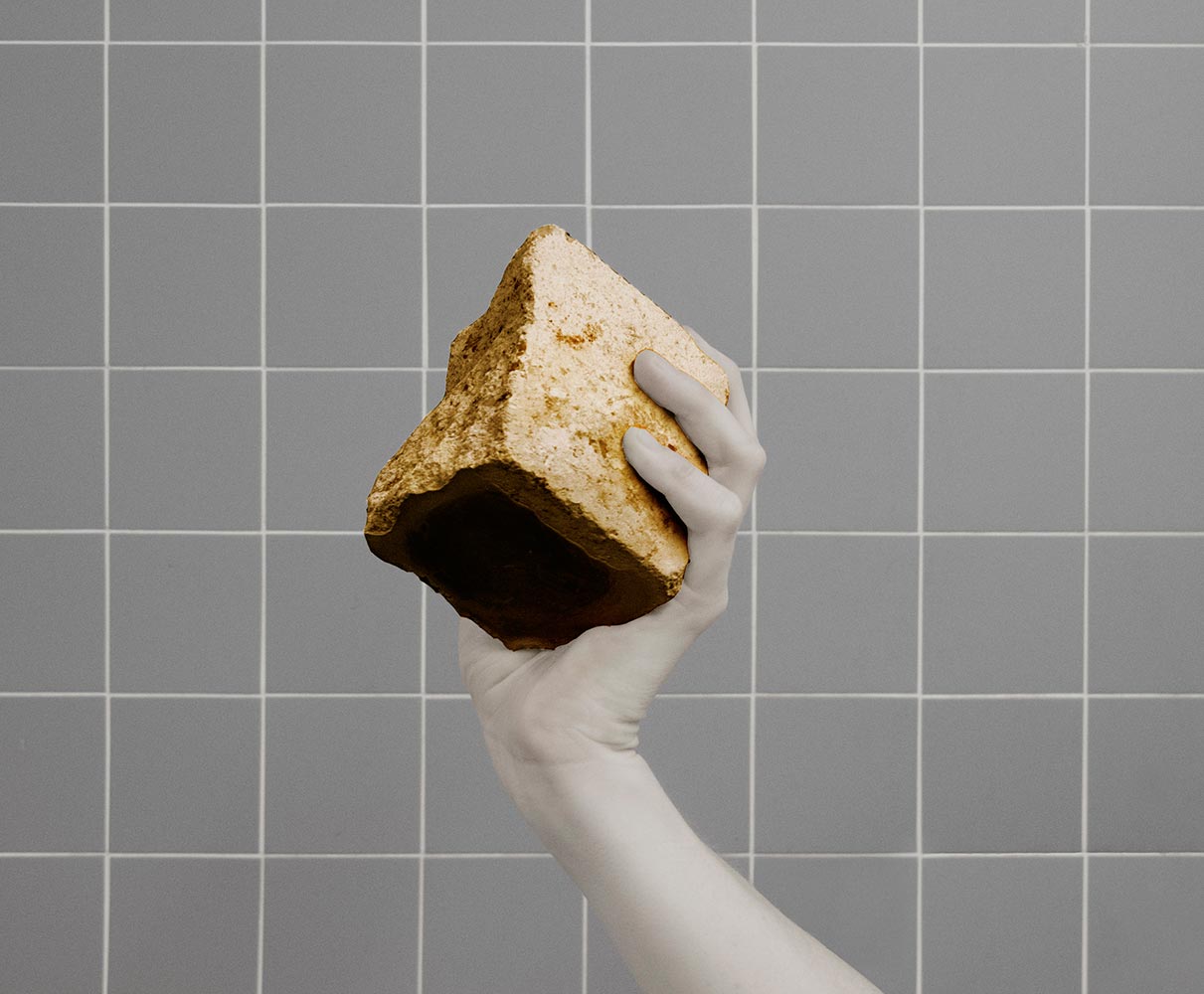
Emerging artist: Connie Anthes Untitled (Latent Acts) (Paired with Sarah Goffman)
Connie Anthes, like Sarah Goffman who selected her, also finds value in objects others don’t fully see. In Untitled (Latent Acts) the Sydney-based artist recasts rocks, pebbles and bricks she has come across in bronze. These bronze stones then become paperweights for ten paper plinths holding thousands of pieces of paper. Viewers are invited to take a sheet of paper, thus contributing to the artwork’s slow demise. “Is the value of the artwork now reduced?” Anthes asks. “This is certainly not how we are taught to behave around artworks – (!NO TOUCHING!) – and as each rock is lifted and held, the viewer participates in their own resistance.”
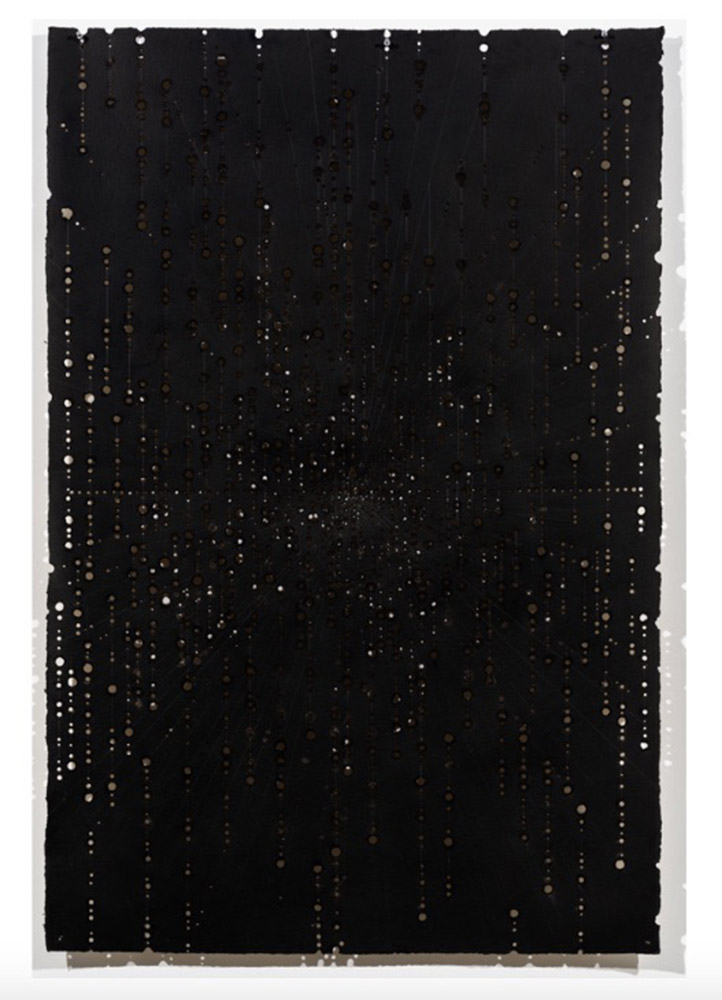
Established artist: Lindy Lee Vault of Wonder (paired with Kath Fries)
Born in Brisbane in 1954, Lindy Lee’s work explores her Chinese heritage, in particular Taoism and Zen Buddhism. Vault of Wonder is meditative: both in the process of creation, and the time it takes for the viewer to drink it in. Created by burning holes with a soldering iron through a sheet of heavyweight paper covered in lashings of Chinese ink, the method is laborious and repetitive, but also soothing. First made for Lee’s 2017 solo exhibition The Seamless Tomb at Sydney’s at Sullivan + Strumpf gallery, viewers are asked to imagine being trapped inside a tomb. “The darkness is so absolute and profound that not a single chink of light can penetrate,” she says. “Here you are, entombed for eternity. Understandably you might feel paralysed, overwhelmed – even annihilated. The Zen question is: how can one find liberation in this situation? Actually, we are always stuck in this tomb – it is the nature of existence.”
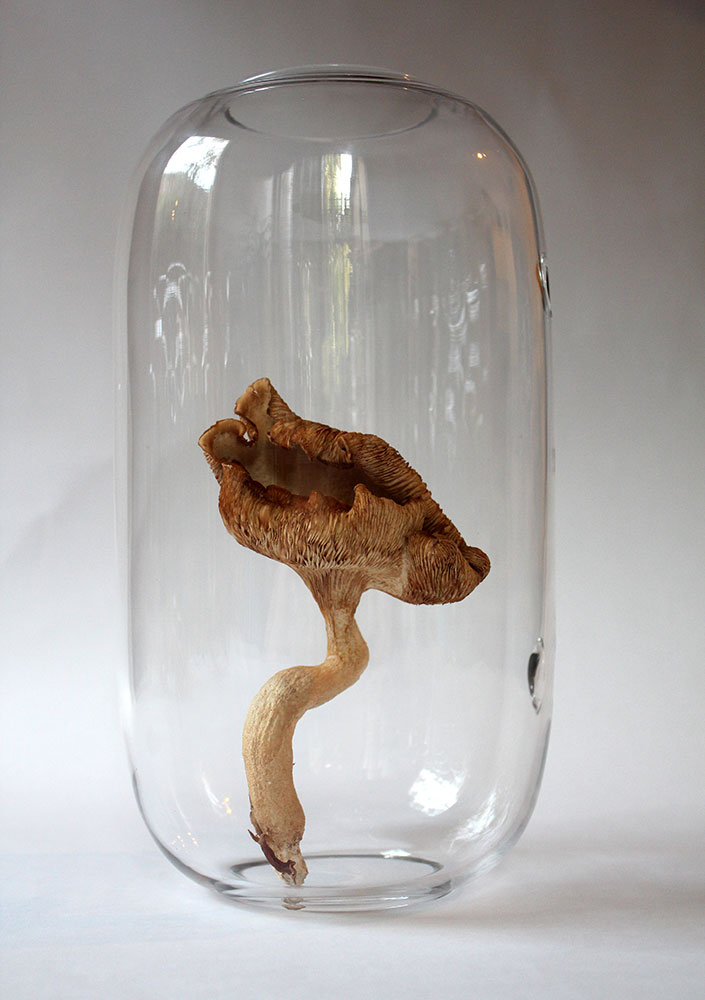
Emerging artist: Kath Fries Enclose (paired with Lindy Lee)
Sydney-based artist Kath Fries, selected by Lindy Lee, also looks at how objects are enclosed and confined, in this case for the consumption of art. In Enclose she has placed sixteen single dried oyster mushrooms in sixteen glass terrariums – commenting on the critical role of fungi in our ecosystems, many hidden from human sight. By isolating the mushroom she removes it from its natural habitat, highlighting that no specimen can exist or evolve in isolation – much less when entombed.